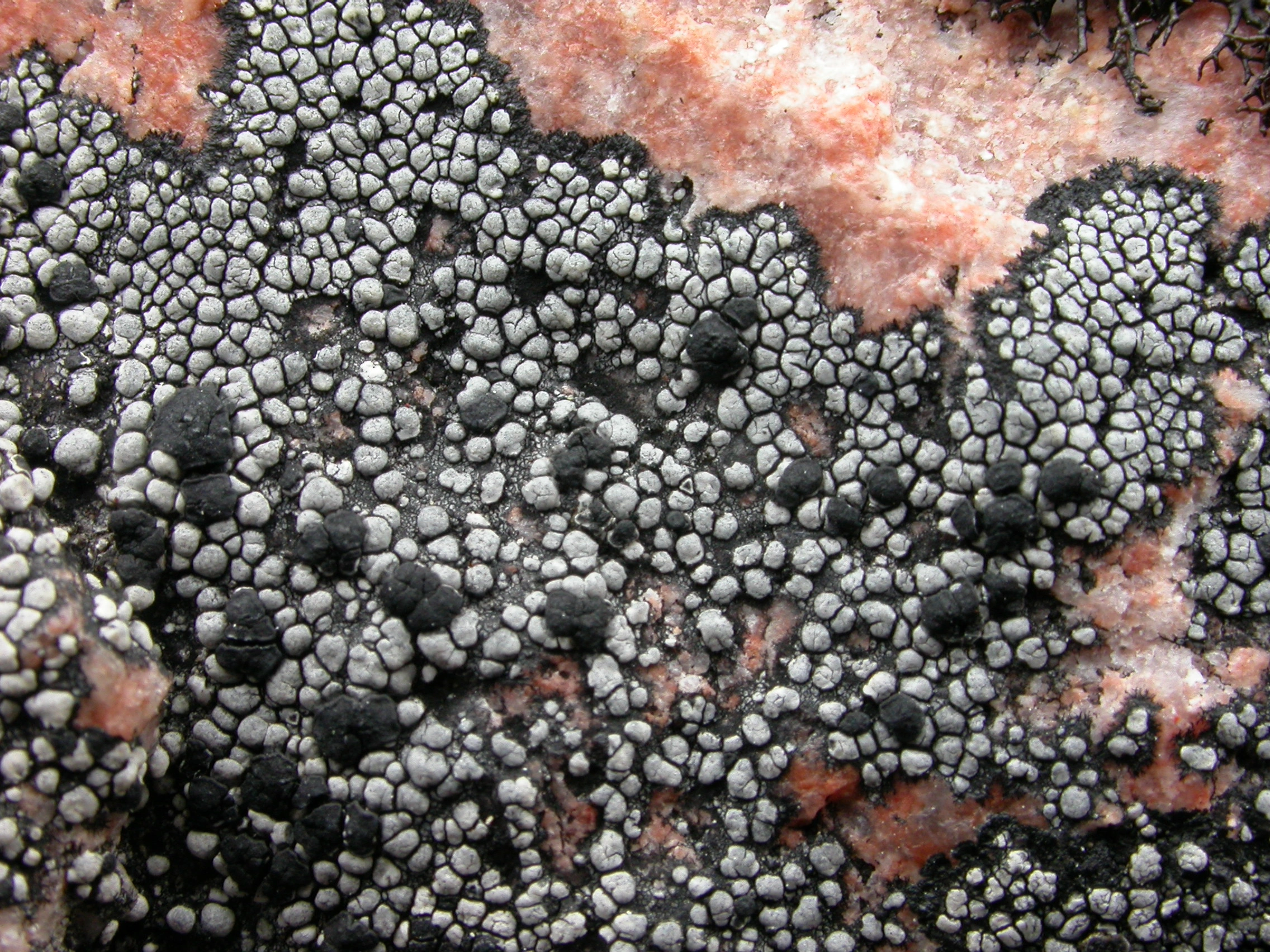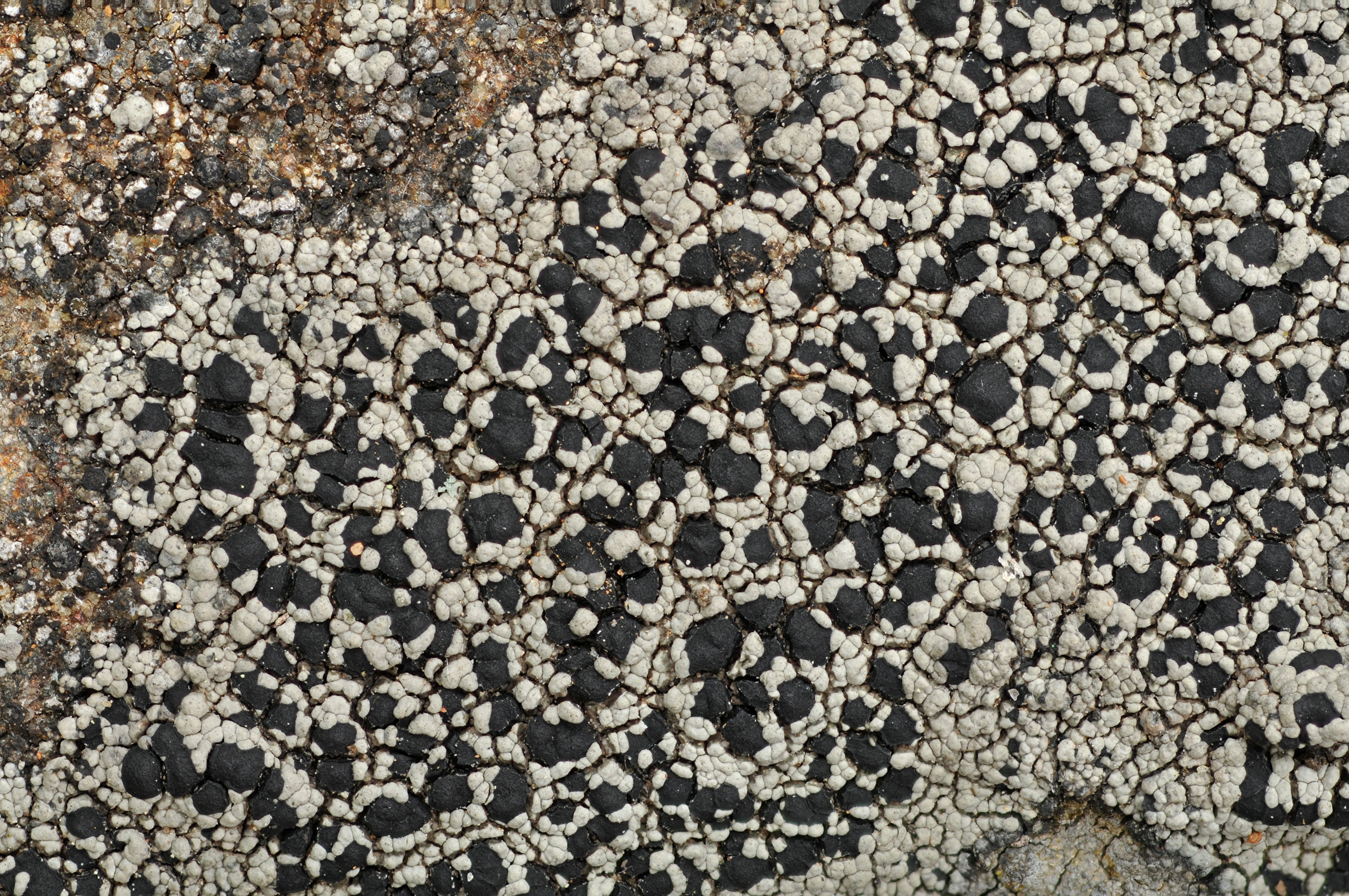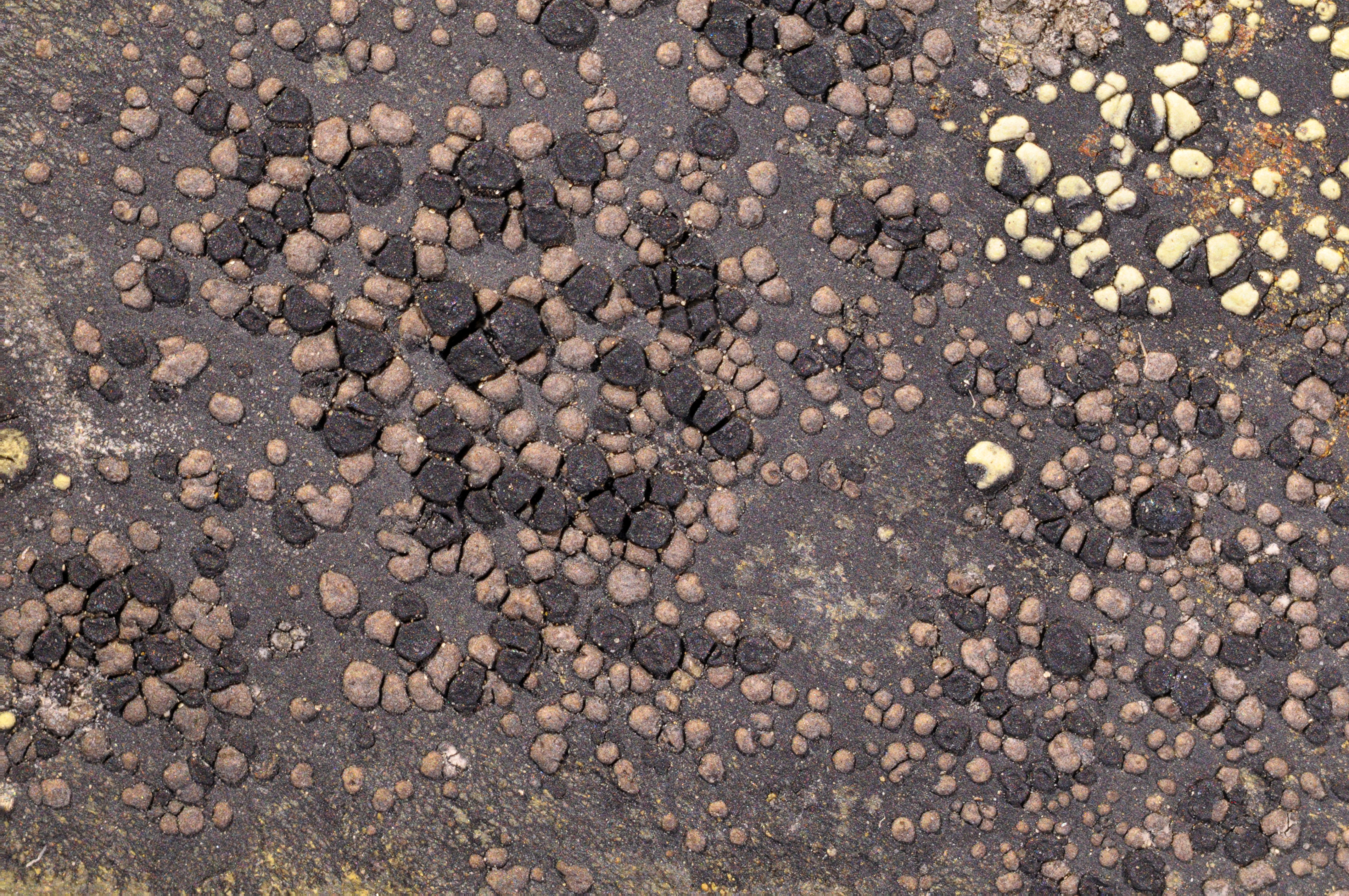Rhizocarpon eupetraeum
- Innhold
- Morphology
- Chemistry
- Habitat
- Comment
- Look-alikes
Morphology
Thallus areolate, up to 10 cm diam.; hypothallus usually well developed, black; areolae up to 1 mm diam., pale grey to medium grey, dull, contiguous or partly scattered, more or less orbicular, weakly convex when young, later becoming strongly convex to hemispherical; medulla KI+ slowly faintly violet. – Apothecia up to 1 mm diam., black, epruinose, orbicular to angular, remaining more or less plane and marginate; excipulum blackish brown in the rim, pale brown to colourless in the inner part, containing crystals, brown pigment K+ red, crystals K+ red (forming acicular crystals); hypothecium brown, K–; hymenium colourless or faintly green; epihymenium brownish black, containing crystals dissolving in K, K– (turning somewhat green); ascospores 8 per ascus, eumuriform, soon becoming dark brown to black, 19–34 × 12-16 µm. – Conidiomata not seen.
Chemistry
Norstictic acid; spot tests: medulla PD+ yellow, K+ red, C–.
Habitat
On siliceous rock. Common, especially on boulders in open conifer forests.
Comment
The species is recognized by the grey, K+ red (norstictic acid) thallus and dark brown to black, eumuriform ascospores. Rhizocarpon cinereovirens and R. glaucescens contain the same substance, but have 1-septate, more or less hyaline ascospores, and R. grande forms somewhat smaller, brownish areolae which contains gyrophoric acid (C+ red), sometimes also barbatic and/or traces of stictic and norstictic acid.



